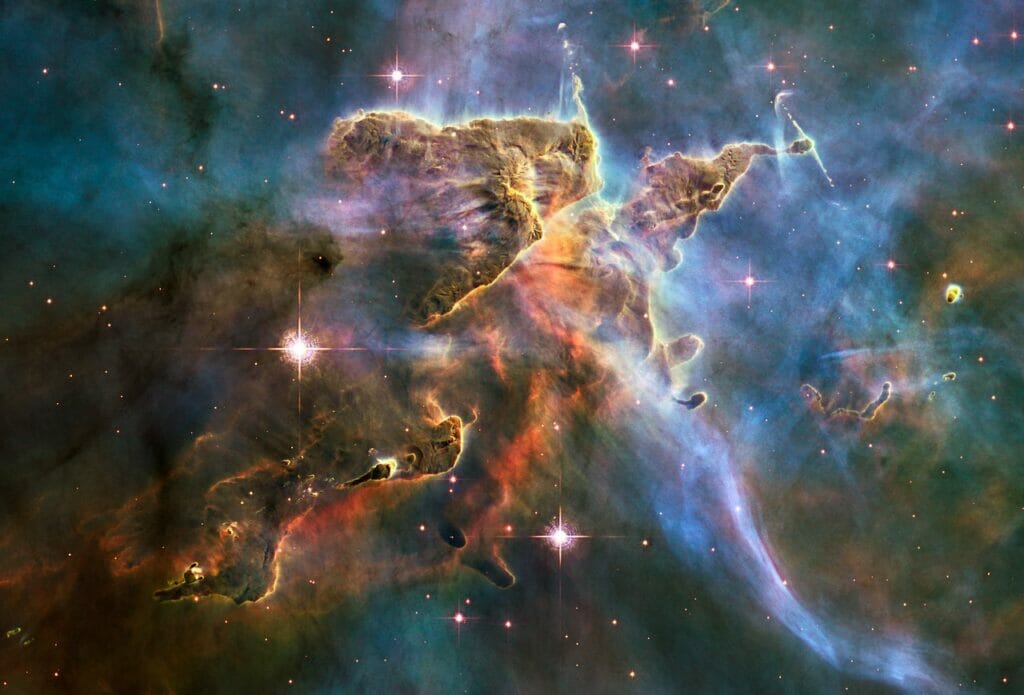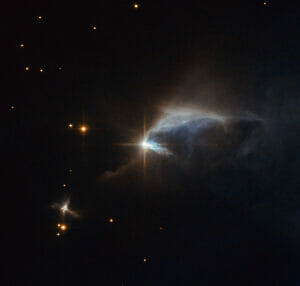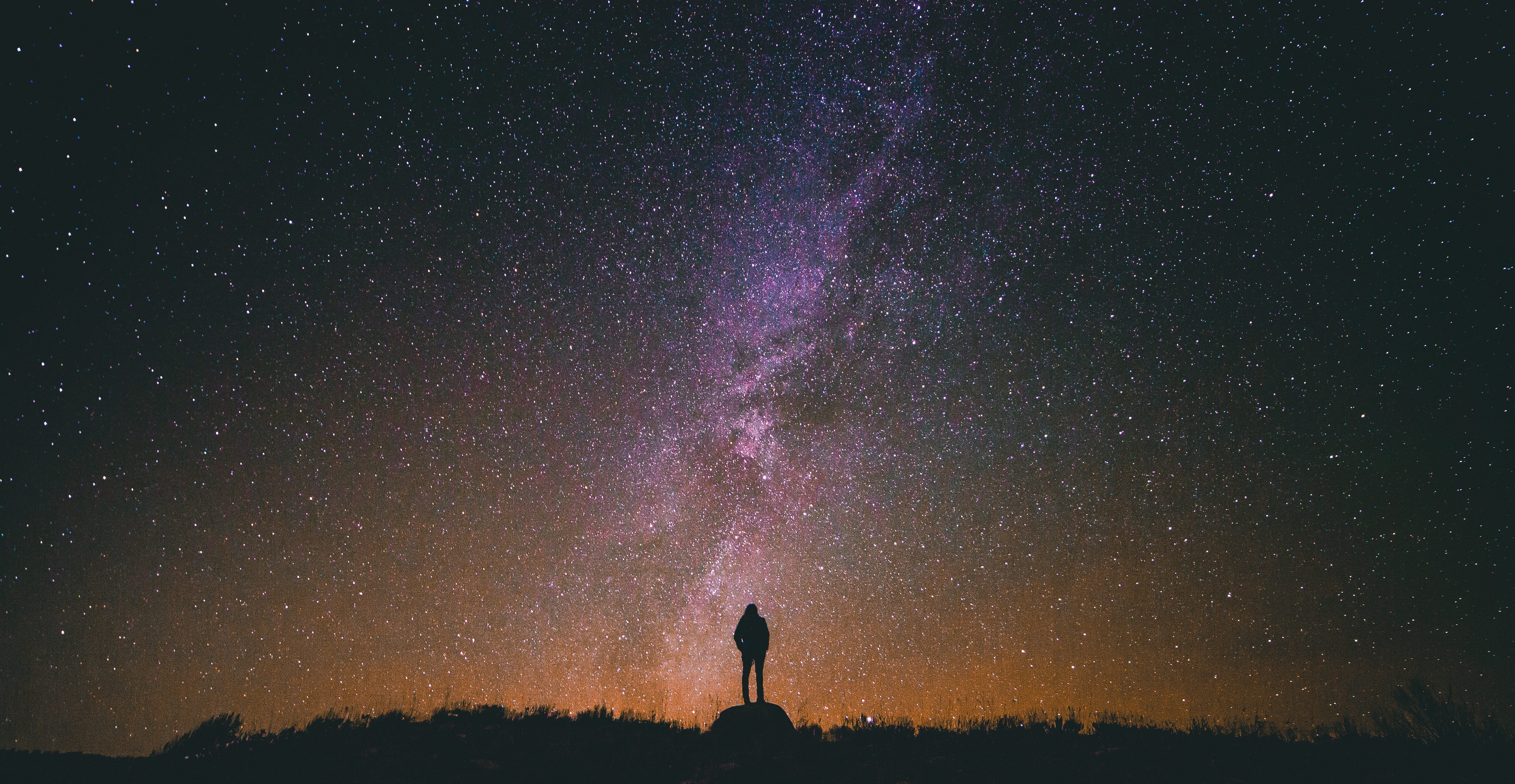The beautiful night sky is filled with thousands of stars that we can see and millions of which we cannot see, with about 4800 stars being born every second. These stars have a life cycle of about 40,000 years to about 10 billion years. However, all these billions of stars in the Universe are at a different point in their life cycle. In this topic, we will be discussing about how these stars are formed and how do they die. This topic will be having two articles where this article will discuss on how stars are born and the other one will explain on how stars die.
Formation of a New Star
Stage-1: Interstellar Cloud or Stellar Nurseries
These Interstellar Clouds are filled with filled with dust particles and gases. They are dense and vast, spanning sometimes to about tens of parsecs (1014 to 1015 Km) across. They consists of about 10-4 to 106 particles per cubic cm (cm3) and usually filled by 70% of Hydrogen gas and remaining is filled by Helium. The typical temperatures of these clouds is about 10K and have masses of more than a thousand times to that of the Sun (which is 1.989 × 1030 Kg). The dust these clouds contain are important as they help cooling the clouds as it contracts and plays a role in star and planet formation.

Now, the cloud begin to collapse under its own gravity and once it compresses past the point where gravity overcomes gas pressure, it is believed that it will fragment into small clumps of matter due to gravitational instabilities in the gas. As the fragments shrink, the average temperature of it is not much different from the parent cloud the reason being that the gas constantly radiates energy in large amounts into space. The inner regions of the shrinking clouds have become opaque to their own radiation and start to heat up.
These temperatures reach to about 10,000K. However, the gas near the edge of this shrinking cloud is still radiating energy so they cool down. The density of this cloud has reached to about 1018 particles/m3, so now it begins to resemble a star. The dense, opaque region at the center is called the Protostar.
Stage-2: Protostar
A protostar is a very young yet not fully formed star that is still gathering mass from the parent cloud or parent interstellar cloud. As it evolves, it shrinks, its density and temperature increases, both in the core and at the photosphere (which is the outer shell of a star from which light radiates.). After about some 100,000 years, the temperature at the center reaches to about 1 million K (1,000,0000K). This leads to the start of proton-proton nuclear reactions that fuses Hydrogen to Helium.

The luminosity of this protostar is about 1000 times to that of the Sun (which is 1L⊙ or 3.846 × 1026 Watts) now as the nuclear reactions haven’t yet begun in the core, the luminosity is emitted out of it due to the release of gravitational energy as it continues to shrink. The protostar isn’t yet in the state of equilibrium even as the temperature of it is pretty high that the outward pressure has become strong enough to counter the gravity’s inward pull, thought the balance isn’t perfect yet.
Also the internal heat of the protostar slowly diffuse out of the core to the outer cooler surface or the photosphere, where the heat radiates into space. Due to which the contraction slows down gradually, but isn’t stopped completely.

As time passes by, the protostar gradually approaches the main sequence which is a continuous and distinctive band of stars that appears on plots of stellar color and brightness, the plots are kept on the Hertzsprung-Russell diagrams or H-R diagrams. Thought the initial contraction and fragmentation of the cloud was rapid, but as the protostar evolves and nears to being a full-fledged star (or a proper newborn star), the evolution slows down. The contraction rate is usually calculated by the rate at which the protostar radiates its own internal energy into space. As the contraction rate decreases so the luminosity of the protostar.
Stage-3: Newborn Stars
Now when an object of one solar mass (1.989 × 1030 kg) shrunk to a radius of about 1,000,000 km (1 million km), its temperature due to the contraction is going to be about 10,000,000 K (10 million K) giving it enough energy to ignite nuclear burning (when in a star, depending on the temperature in the core, there is the production of heavier and heavier elements). Which leads protons fusing into helium in the core and a star is born. The newborn star’s temperature at the surface is about 4500K.
Now for stars, if their surface temperature is low then its luminosity is less which also means that no matter how big the star is the size doesn’t matter but how hot it is. Now once the star stars fusing with hydrogen, it established as inward gravity and outward pressure hydrostatic balance or also called hydrostatic equilibrium.

Depending on the surface temperature and luminosity, the star may remain unchanged for about the next 10 billion years which is actually the main sequence. Our Sun itself is currently in the middle of its own main sequence.
Tune in next week to learn more on how do stars die (Click Here)




[…] the formation and death of a star (If not, Read the previous articles on Stellar Evolution Birth of a Star and Death of a Star). As we already know that stars die, but as they do so, they leave behind […]
[…] you missed the previous article click here as this article is the continuation to […]
Stars are the most beautiful objects of the night sky. But the sequence of a dying star intrigues us more than the sequence of its formation.
[…] Stellar Evolution: The Formation of a New Star September 3, 2020 […]